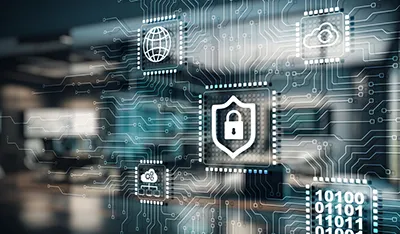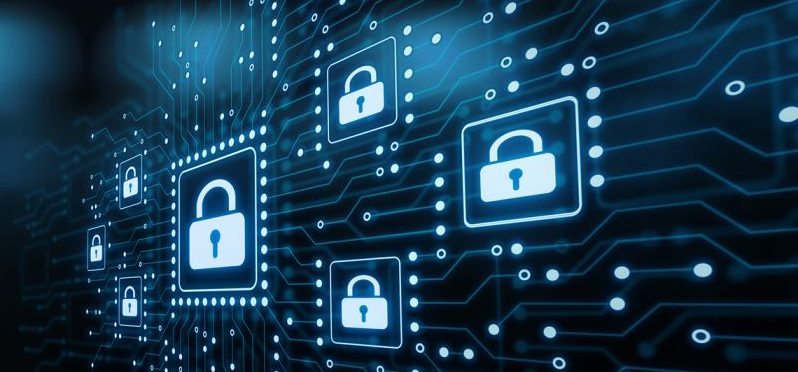Top Tips for Ensuring Secure Data Destruction in Your Cyber Security Plan
Exactly How Appropriate Data Destruction Adds to Robust Computer System Safety And Security Services and Mitigates Threats of Information Breaches
In today's digital landscape, the value of appropriate data devastation can not be overemphasized, as it offers as a fundamental element of thorough computer safety solutions. The ramifications of poor data devastation extend past mere conformity; they can profoundly impact an organization's cybersecurity stance and online reputation.
Relevance of Information Damage
In today's digital landscape, the importance of information damage can not be overemphasized. As companies progressively count on electronic assets, the potential dangers connected with information violations and unapproved accessibility enhance. Reliable data destruction is an essential component of a comprehensive information safety and security technique, securing sensitive info from falling under the hands of malicious actors.
When data is no longer required, merely erasing data or formatting hard disk drives is inadequate. Residual data can frequently be recovered using readily offered devices, presenting considerable risks to both individuals and companies. This highlights the requirement for robust information damage practices that ensure all data is irretrievably erased.
In addition, regulative compliance requireds, such as GDPR and HIPAA, highlight the responsibility to protect delicate data, including its correct disposal. Non-compliance can cause serious legal effects and monetary penalties. data destruction. Therefore, incorporating efficient data devastation protocols not just boosts safety and security but additionally fortifies an organization's credibility and credibility

Approaches of Secure Data Erasure
Several reliable techniques of safe data erasure can be used to guarantee that delicate information is completely gotten rid of from storage tools. One widely identified method is data overwriting, which entails replacing existing information with arbitrary patterns numerous times. This approach considerably lowers the chances of data recuperation, although it may not be efficient versus advanced forensic techniques.

Physical destruction is also a dependable method, where storage gadgets are made unusable through shredding, crushing, or incineration. This approach ensures that information can not be recouped whatsoever yet needs cautious handling of hazardous materials.
Lastly, specialized software devices made for safe and secure information erasure supply performances that adhere to different erasure standards. These tools typically consist of attributes like verification procedures to validate effective data damage.
Employing these approaches in mix can improve data security and minimize the dangers associated with information violations, guaranteeing that sensitive details is not unintentionally exposed.
Legal and Conformity Considerations
The techniques used for safe information erasure not just serve to shield sensitive details but additionally must line up with legal and compliance structures regulating information protection. Organizations are called for to adhere to different regulations, such as the General Data Defense Regulation (GDPR), the Medical Insurance Mobility and Liability Act (HIPAA), and the Payment Card Market Information Safety And Security Requirement (PCI DSS) These laws mandate specific procedures for information handling and destruction, making sure that individual and sensitive information is irretrievably gotten rid of when no more needed.
Failure to conform with these lawful demands can result in considerable fines, consisting of fines and reputational damage. Additionally, organizations need to keep documents of information destruction processes, showing conformity throughout audits or investigations. This paperwork not just shields versus legal consequences yet additionally reinforces trust with stakeholders and clients, showcasing a dedication to information protection.
Incorporating legal and compliance considerations into information destruction practices is necessary for any kind of company. It decreases the threat of information breaches and highlights a positive approach to protecting sensitive details, eventually cultivating a society of safety and security and accountability throughout the organization.
Effect On Cybersecurity Posture
Effective information destruction significantly enhances an organization's cybersecurity posture by lowering the prospective assault surface for cyber threats. When sensitive data is not correctly ruined, it remains available to destructive stars that can have a peek at this site exploit this information for unapproved accessibility, identity burglary, or business espionage. By applying robust data devastation procedures, companies can properly lessen the danger Resources of data breaches and enhance their general safety structure.
Moreover, the safe and secure disposal of unneeded or out-of-date information not only secures sensitive info but additionally helps companies abide by sector policies and criteria. Failure to properly damage data can bring about severe lawful effects and reputational damage, more jeopardizing a company's cybersecurity stance.

Ultimately, prioritizing efficient data destruction is important for fostering a robust cybersecurity posture, guaranteeing that organizations remain watchful against evolving cyber threats while protecting their crucial assets and stakeholders.
Best Practices for Organizations
Implementing ideal techniques for data destruction is vital for organizations intending to safeguard sensitive information and mitigate cybersecurity threats. Firstly, companies must establish an extensive data destruction policy that describes obligations and treatments. This plan should abide by appropriate policies, such as GDPR or HIPAA, ensuring lawful conformity.
Secondly, it is essential to make use of authorized data sanitization approaches, including information wiping, degaussing, and physical destruction, customized to the kind of information and storage space medium. Using certified specialists for data devastation services boosts the reliability of these approaches.
Furthermore, companies ought to keep a comprehensive supply of all data storage devices, making sure that all out-of-date or replaced devices undertakes destruction. Routine audits of information destruction methods can assist boost and identify weaknesses conformity.
Worker training is an additional important aspect, as staff needs to understand the value of data destruction and stick to established procedures. Finally, organizations ought to record all data damage tasks to great site provide liability and traceability, which can be indispensable throughout audits or in the occasion of a violation.
Verdict

One commonly recognized approach is information overwriting, which involves changing existing data with arbitrary patterns multiple times.The techniques utilized for safe data erasure not just offer to secure sensitive information yet also has to align with legal and compliance frameworks governing data security. These policies mandate details procedures for data taking care of and destruction, making certain that sensitive and personal data is irretrievably eliminated when no longer required.
By implementing robust data destruction protocols, organizations can successfully lessen the threat of information violations and boost their total security framework.
In conclusion, proper data destruction is important for improving computer safety solutions and alleviating the dangers linked with information violations. - data destruction